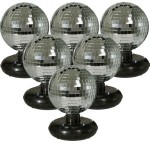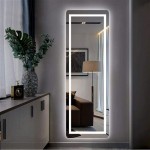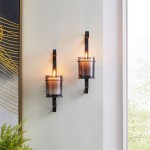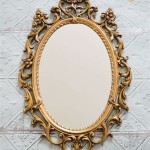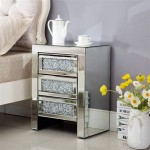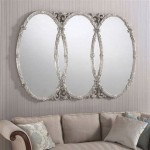Liquid Nails for Mirrors: A Comprehensive Guide
Liquid Nails is a popular brand of construction adhesive known for its strength and versatility. Many variants exist within the Liquid Nails product line, and selecting the appropriate adhesive for mounting mirrors requires careful consideration. Using the wrong adhesive can lead to mirror damage, improper adhesion, or even safety hazards.
This article aims to provide a detailed understanding of using Liquid Nails for mirrors, covering topics such as suitable product selection, surface preparation, application techniques, and safety precautions. It will also explore alternatives to Liquid Nails for specific mirror mounting situations.
Choosing the Right Liquid Nails Product: Not all Liquid Nails adhesives are suitable for mirrors. Some contain solvents that can damage the mirror's backing, leading to discoloration or distortion. It is crucial to choose a product specifically designed for mirrors or, at the very least, one that is explicitly labeled as "mirror safe." These products are typically formulated without solvents that could harm the reflective surface. Consult the Liquid Nails product selector guide or contact their customer service for confirmation before making a purchase.
Suitable Liquid Nails products for mirrors often feature descriptions like "heavy-duty construction adhesive," "mirror adhesive," or "all-purpose adhesive (mirror safe)." Pay close attention to product labeling and technical data sheets for compatibility information.
Surface Preparation: Achieving a strong and lasting bond relies heavily on proper surface preparation. Both the mirror and the wall surface must be clean, dry, and free of dust, grease, and any other contaminants. Clean the wall surface with a suitable cleaner depending on the wall material (e.g., isopropyl alcohol for painted surfaces, a mild detergent solution for tiles). For the mirror, gently clean the back with a lint-free cloth and isopropyl alcohol. Ensure both surfaces are completely dry before applying the adhesive.
For porous surfaces like drywall or wood, applying a primer can improve adhesion and prevent the adhesive from being absorbed into the material. This step is particularly important in humid environments.
Application Techniques: The method of applying Liquid Nails to the mirror depends on the specific product and the size and weight of the mirror. For smaller, lighter mirrors, applying the adhesive in dots or lines along the back of the mirror is usually sufficient. For larger, heavier mirrors, it's recommended to apply the adhesive in a zig-zag pattern to provide more surface area for bonding and distribute the weight more evenly. Refer to the manufacturer's instructions for the recommended application pattern and spacing.
Once the adhesive is applied, carefully position the mirror on the wall and press firmly. Some Liquid Nails products require temporary support while the adhesive cures. Use painter's tape or other appropriate supports to hold the mirror in place until the adhesive reaches its full strength, as indicated on the product packaging.
Safety Precautions: Working with adhesives requires taking necessary safety precautions. Ensure adequate ventilation in the work area to prevent inhalation of fumes. Wear gloves to protect skin from contact with the adhesive. Safety glasses are also recommended to protect the eyes from splashes or debris. In case of accidental skin contact, wash the affected area thoroughly with soap and water. If eye contact occurs, flush immediately with plenty of water and seek medical attention.
Alternatives to Liquid Nails for Mirrors: While Liquid Nails can be an effective solution for mounting mirrors, other options might be more suitable depending on the specific circumstances. For very heavy mirrors, specialized mirror mounting clips or hardware are often recommended for added security and stability. Double-sided mirror tape can be a convenient option for smaller, lightweight mirrors, although it may not provide the same level of long-term adhesion as Liquid Nails. For damp or humid environments, consider using a silicone-based adhesive designed for bathroom applications.
Clean Up: Excess adhesive can be removed with a solvent recommended by the manufacturer before it cures. Once cured, removal becomes more difficult and may require scraping or specialized solvents. Always test any solvent on an inconspicuous area of the mirror or wall to ensure it doesn't cause damage.
Choosing the right adhesive and following proper application techniques are critical for successfully mounting mirrors. By carefully considering these factors and adhering to safety guidelines, one can achieve a secure and long-lasting installation.
Always consult the specific product instructions and safety data sheet for the most accurate and up-to-date information regarding the chosen Liquid Nails product.

Liquid Nails Mirror Aluminium Eys Malaysia Home Improvement S

Liquid Nails Mirror Aluminium Eys Malaysia Home Improvement S

Liquid Nails High Strength Construction Adhesive For Mirror Metal Glass Eys Hendra Hardware

Liquid Nails High Strength Construction Adhesive For Mirror Metal Glass Eys

Liquid Nails Ln 930 Adhesive Mirror Intr Tan 10 Ounce 1 Each Com

Eys Liquid Nails Mirror Aluminium 75gm 301196 Adhesives Glues Horme Singapore

Liquid Nails 10 Oz Mirror Adhesive Ivey Lumber Company

Eys Liquid Nails Mirror Aluminium 310g Veligaa Hardware

Eys Liquid Nails Mirror Aluminium 75g Furniture Home Décor Fortytwo

Eys Liquid Nails Mirror Aluminum Joolong Hardware

